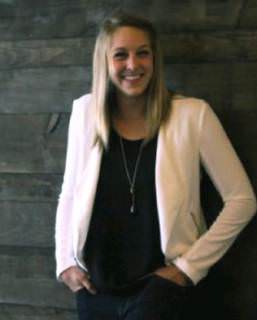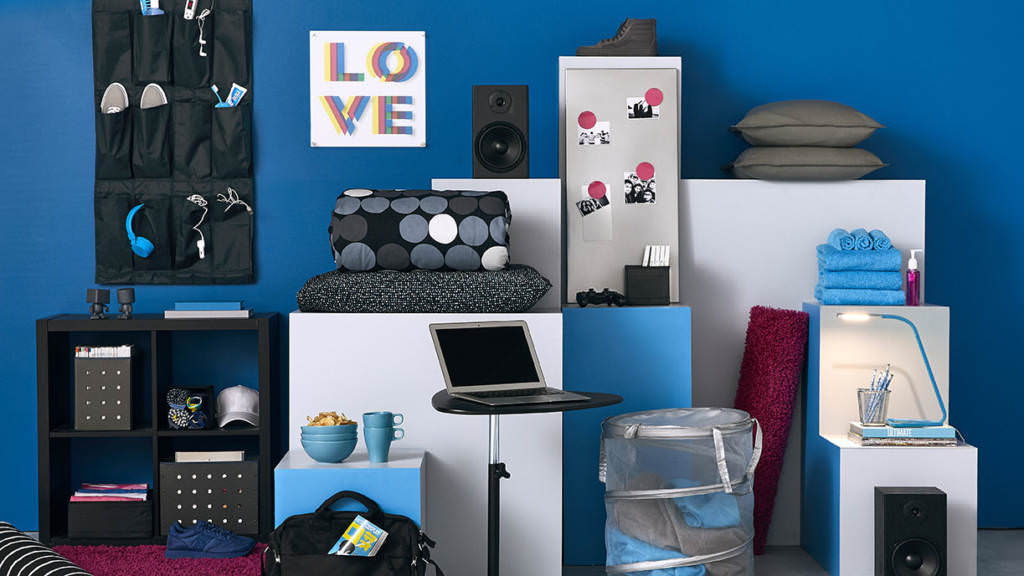When the summer season slowly comes to a close, it signals a start for brands to begin conversations with consumers through back-to-school messaging.
Ikea is ramping up its marketing with millennials by hitting college campuses this month with a series of interactive videos promoting the Danish retailer’s products for dorms.
The company considers back-to-college season as a pivotal part of its brand marketing—especially since media consumption among student audiences remains in full flux. Ikea admits that it has become increasingly difficult to engage with the younger generation with traditional paid channels to communicate their proposition.
In an effort to target the demographic—specifically 18-to-24-year-olds—the multinational brand activated an influencer campaign by partnering with pop duo Superfruit’s Mitch Grassi and Scott Hoying, and debuted back-to-school ads that doubled as personalized adventures exclusively on Snapchat. The customizable experience enables Snapchat users to shape their own stories by following the influencer of their choice, then controlling and impacting the outcome with the tap of a button.
Ikea curated seven different style collections for its college campaign by intertwining data, technology and content. The motive is to offer insight into user preferences and capture the brand’s range of styles. It was complemented by a sensual 25-minute YouTube video of a woman soothingly describing how the products will give you “head orgasms.”
Kerri Homsher, external communications specialist for Ikea, joined AListDaily to explain how the brand is approaching a re-envisioned marketing strategy.

Why is the back to school and college campaign an important marketing message for Ikea? What is the campaign designed to accomplish?
This year’s campaign aims to showcase how Ikea can support our customers during the moment by being the partner that allows customers to get what they need and express their personal style. For the parents, it’s very emotional. It’s the moment they’ve saved for since their child was born. They are concerned practically. Their focus is making sure their child has what they need to live away from home and be successful. For the students, the insight is still emotional. It’s a bittersweet moment for them as well, but the focus is slightly different. Of course, they still need the practical items, but they’re also wanting to find ways to express themselves. An empty dorm room is more than a space to fill with a bed, a desk and a set of drawers—it’s the first space they truly own. A blank canvas for self-expression. So, there is more of a focus on style. Ikea understands that a home isn’t just the place you live—it’s the foundation for your dreams, goals and aspirations—whatever it may be. With how expensive college already is, affording the necessities should be an exciting support rather than another financial burden.
How are you zeroing in on specific aspects of product marketing for each audience—parents versus students?
Back to college is a time when many are creating a dream home or space for the first time. Everything today is about understanding the consumer and then providing them with convenience and greater access. Many companies get these insights through traditional research like surveys and focus groups. Ikea goes one step further by doing home visits, both in person and virtually. We want to see real challenges in your living space because we design for solutions. It’s from all of this combined data that we then zero in on specific product suggestions. We have developed a central hub for all things. Additionally, we created a dorm and apartment checklist, which helps students and parents get prepared for college life.
For parents, we know that they’re mainly concerned with ensuring their child has the necessities for life away from home. One thing we’re testing this year to make shopping easier for parents is a bundle button that allows people to add all items in that bundle to the shopping cart. We created product bundles for different areas of the college home, including bedding, bedroom furniture, living spaces, cooking and eating, and common areas.
For students, since we know their focus is more about self-expression, this year we created coordinated styles using Ikea products. To make it even easier, we even have a quiz to help students find their personal style. We also look for opportunities to try something new that will surprise our fans or connect to a trending topic, which is why we launched a mini-series of videos—“Oddly Ikea”—that is a play on the Autonomous Sensory Meridian Response (ASMR) genre. These videos focus on products that are relevant to college students and are meant to not only educate the viewer on Ikea products, but also to help them relax.
Why are influencers a critical voice to Ikea’s brand messaging? How do you plan on testing new methods and evolving with influencers?
In today’s digital media landscape and with how people consume content, we understand the importance of giving people a reason to stop the thumb and engage—and then share. Consumers are much more likely to engage with a brand if they saw a recommendation from a friend, and many look to influencers as trustworthy sources, just like their friends.
We’re always looking for new ways to engage with the audience we’re targeting for back to college. We engaged influencers because it’s a great way for a brand to make a connection with its consumers. Also, we know that the vast majority of students discover new content online by browsing their social feeds rather than through search or direct shares. When it comes to fashion and style, their decisions are often informed by what others will think. On a national level, we utilize influencers to help us tell an authentic story, highlight how people use Ikea products in their homes and reach new audiences that may not think of Ikea first. From a global perspective, we even look to do product collaborations with well-known design influencers.
Why did you decide to launch on Snapchat, considering the platform is not conducive to cultivating influencer activations?
One of the Ikea values is “doing it a different way.” Snapchat gives us both a way to natively engage with the college consumer and show up in a way that we haven’t before with interactive video that allows users to control the narrative. It’s very easy to tap past an ad on the platform, but we’re seeing fans lean in to follow the storyline we’ve presented, all the while seeing what Ikea has to offer.
How is Ikea’s social media strategy evolving?
We continue to optimize and evolve our social media strategy every year. We learn more about our fans, and build custom audiences to find those that we think will become fans with the right introduction to our brand.
What is the Ikea’s strategy on communicating with digital-first consumers? How do you reach them?
The reality of how people consume media and shop today is digital and we continue to see mobile taking a bigger part across the board and continuing to be an influence—and that’s something we need to be mindful of. We always aim to take a digital and mobile first approach in all of our marketing efforts. It’s a new way of working for us, but we want customers to shop where and how they want so that the interaction with the brand feels seamless. For example, possibly getting to us through social media, but then shopping either in the store or online.
What are your key learnings from previous years? What insights can you share? How has it changed?
The consumer is smarter than ever, so marketing efforts and product offerings need to be smarter than ever. The students are not necessarily the primary decision makers. It’s a joint decision between parents and students, but we see that the parents still hold the spending power. We’re always looking for insights that drive our consumers.
Over the last few years, we’ve had several learnings. Back-to-college shopping is no longer just about going to the store and picking up what you need. We see researching and shopping beginning as early as April and May, when students start to get acceptance letters. Then, we see the peak in July when many parents and students are actually making the bulk of their purchases. However, we know from previous years that the shopping never actually ends. Customers are shopping on school breaks and throughout the year—so it’s about being mindful of when these consumers are looking, not just where. It’s important to develop creative with specific targets and specific platforms in mind so that the content is more customized. You also need to offer products that can work harder for the consumer. For example, at Ikea we have smart furniture, products with hidden benefits and products that help you live more sustainably at home. Affordability is more important than ever. Our research told us that the overwhelming majority of parents say they expect their children to attend college, but the rising cost of education and burden of college debt is generally perceived to be the biggest limitation to the American dream for future generations.
What kind of targeting is most important for the marketing behind this?
Back to college is a highly competitive space, and brands—both in- and out-of-home furnishings—are offering unique services and multichannel experiences. So, you always need to be doing something that’s going to make people engage, especially during this time of the year. Whether going off to school or staying close to home, these are big family decisions. We target both the parents—whose focus is on affordable, quality solutions—and the student who wants a stylish, fun space. Their mindsets, priorities and how Ikea can support them are different, so we aim to tailor the messages accordingly.

